Abstract
When 5 mg doses of beryllium hydroxide, Be(OH)2, were injected intravenously (i.v.) into rats, much of the injected material was retained in the lungs. When the injection of Be(OH)2 was accompanied by particulate antigens such as killed B. abortus organisms or SRBC, immune responses took place in the intra-thoracic lymph nodes (ITLN) so that antibodies of the IgA class were generated and endowed the bile with significant agglutinating activity. This did not happen when the antigens were injected without the beryllium adjuvant. Similarly, a soluble antigen, bovine serum albumin (BSA) only gave rise to significant amounts of biliary and serum antibodies after i.v. injection if Be(OH)2 was used too. The highest titres occurred when the antigen followed the adjuvant after an interval of a few seconds but substantial titres still resulted if the injection of antigen was delayed for 24 hr. The amounts of biliary antibodies generated by the parenteral injection of antigen and adjuvant were comparable to those that occurred after the same materials were injected directly into the GALT. The adjuvant action of Be(OH)2 was able to induce in athymic (nude) rats the production of measurable amounts of both biliary and serum antibodies to SRBC.
Full text
PDF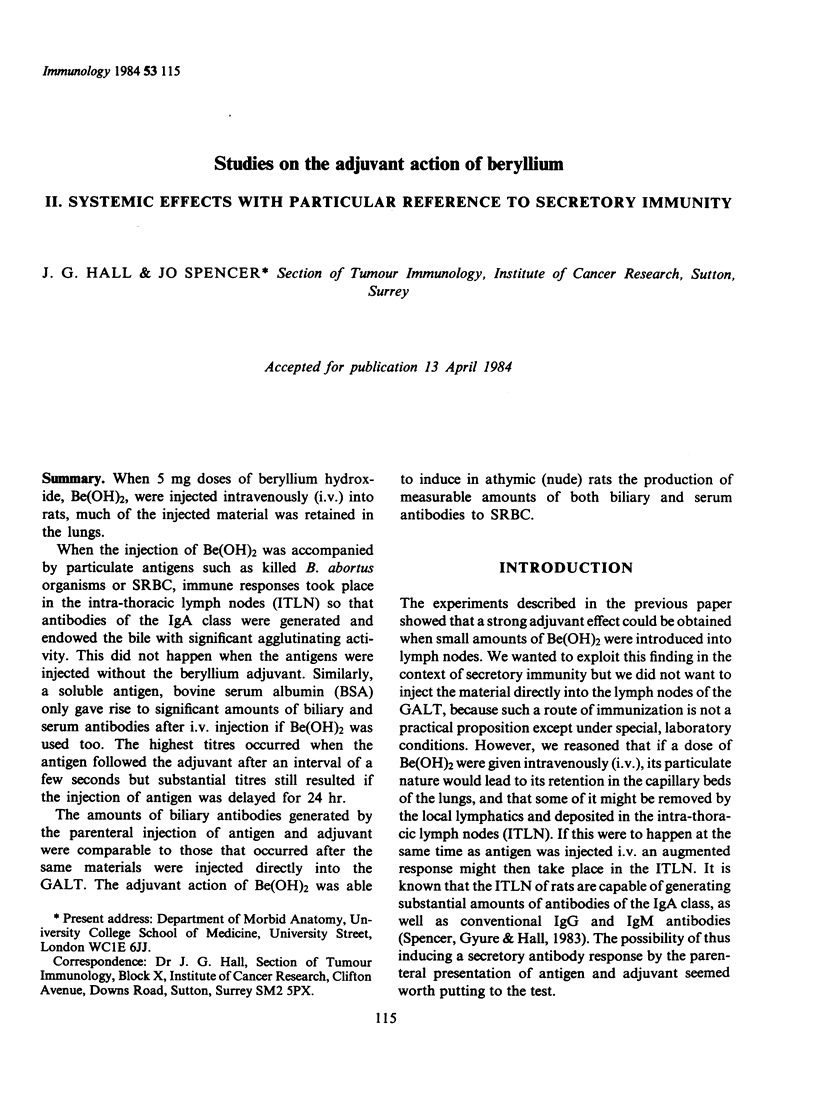
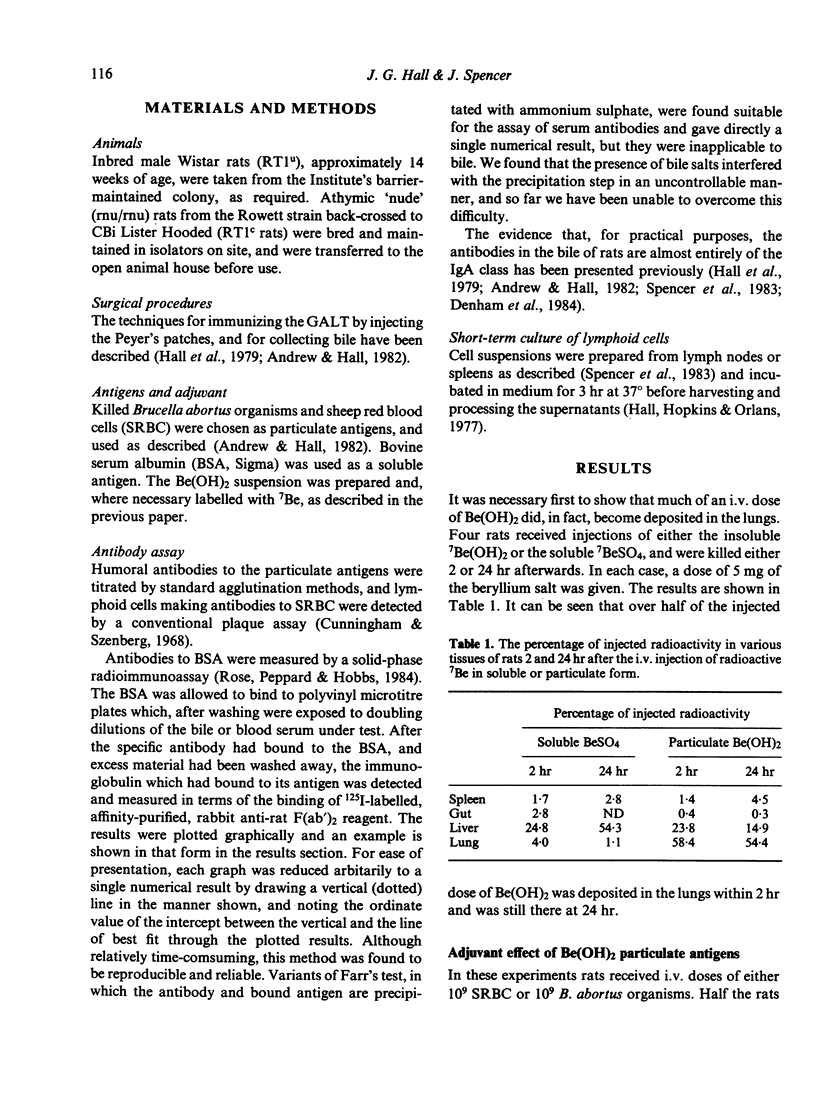
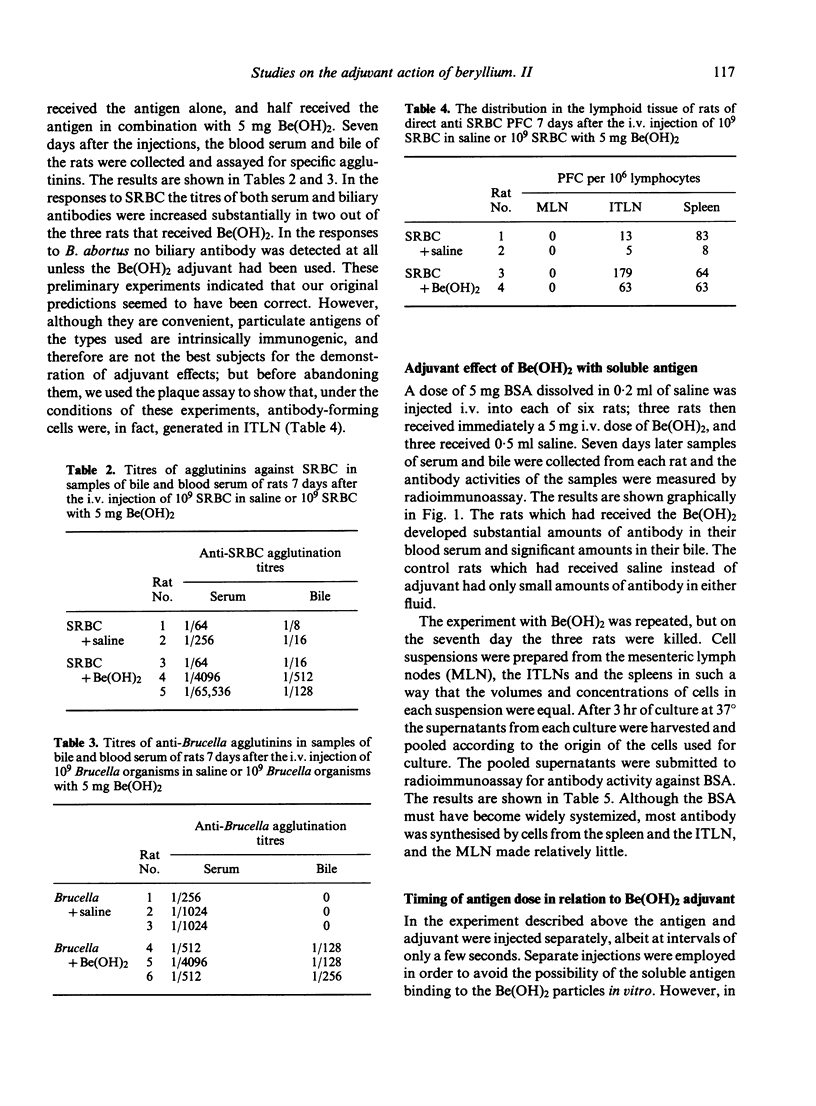
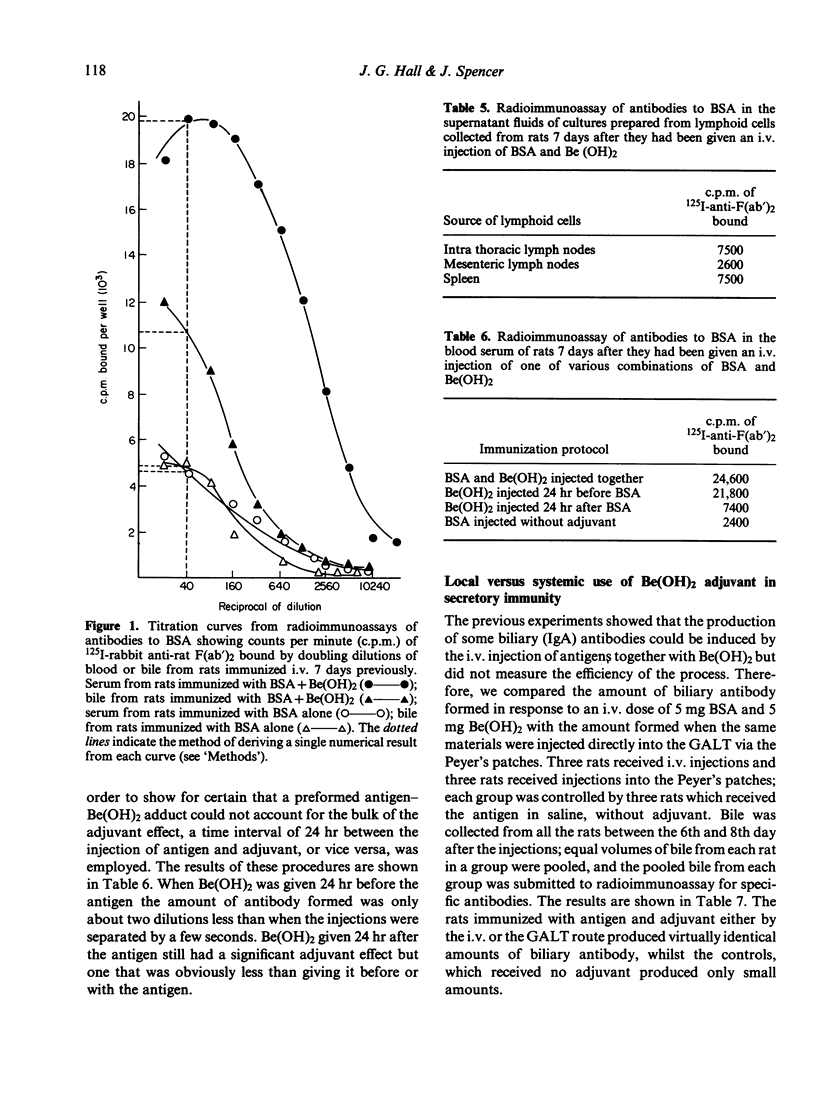
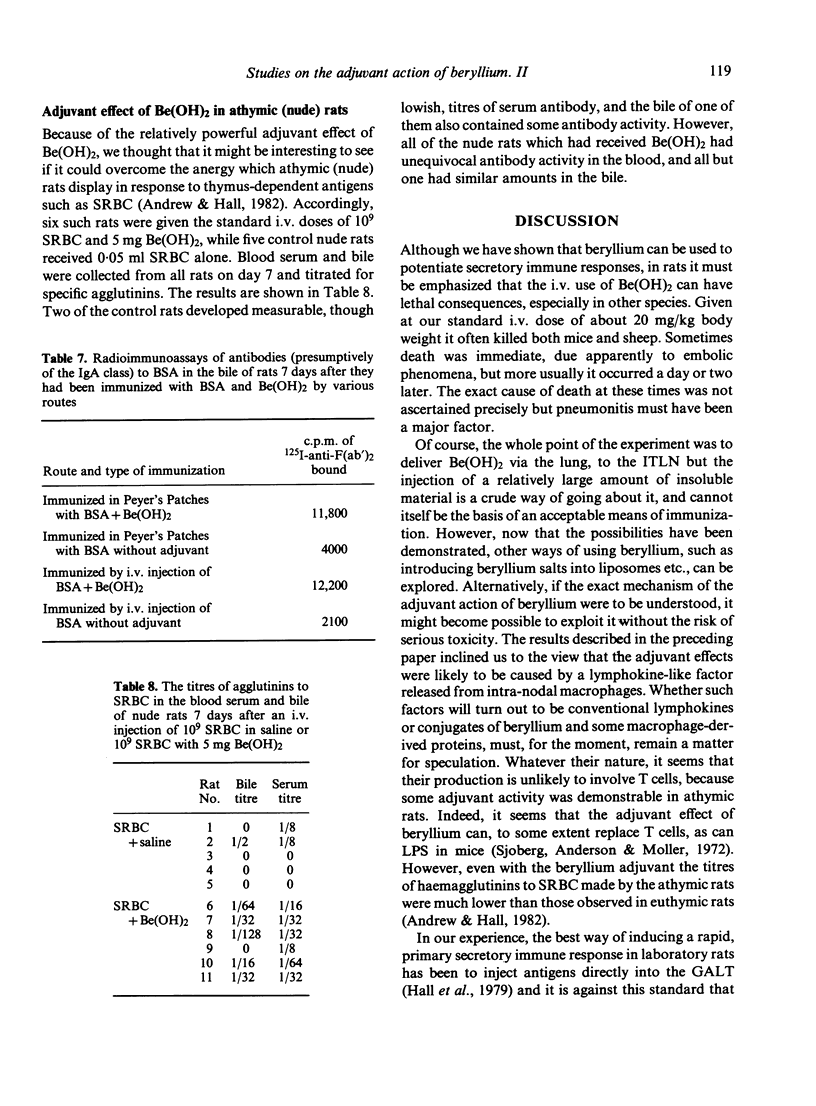
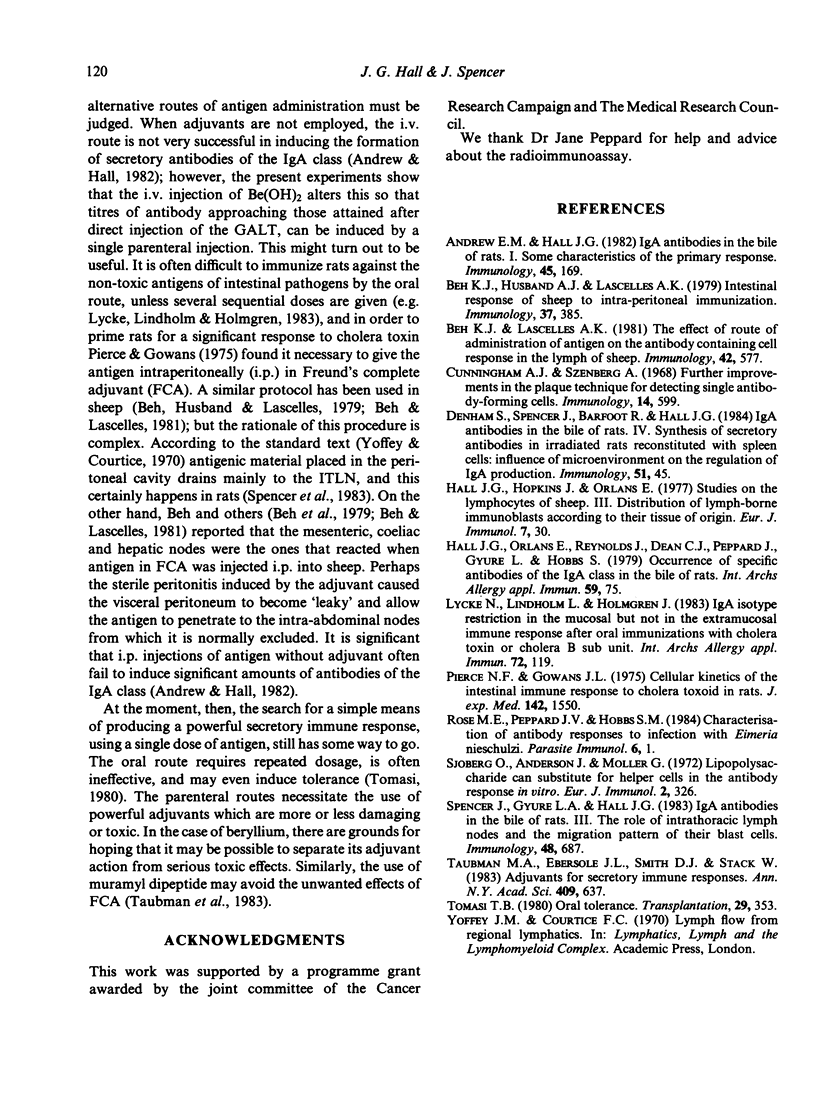
Selected References
These references are in PubMed. This may not be the complete list of references from this article.
- Andrew E., Hall J. G. IgA antibodies in the bile of rats. I. Some characteristics of the primary response. Immunology. 1982 Jan;45(1):169–175. [PMC free article] [PubMed] [Google Scholar]
- Beh K. J., Husband A. J., Lascelles A. K. Intestinal response of sheep to intraperitoneal immunization. Immunology. 1979 Jun;37(2):385–388. [PMC free article] [PubMed] [Google Scholar]
- Beh K. J., Lascelles A. K. The effect of route of administration of antigen on the antibody-containing cell response in lymph of sheep. Immunology. 1981 Apr;42(4):577–582. [PMC free article] [PubMed] [Google Scholar]
- Cunningham A. J., Szenberg A. Further improvements in the plaque technique for detecting single antibody-forming cells. Immunology. 1968 Apr;14(4):599–600. [PMC free article] [PubMed] [Google Scholar]
- Hall J. G., Hopkins J., Orlans E. Studies on the lymphocytes of sheep. III. Destination of lymph-borne immunoblasts in relation to their tissue of origin. Eur J Immunol. 1977 Jan;7(1):30–37. doi: 10.1002/eji.1830070108. [DOI] [PubMed] [Google Scholar]
- Hall J., Orlans E., Reynolds J., Dean C., Peppard J., Gyure L., Hobbs S. Occurrence of specific antibodies of the IgA class in the bile of rats. Int Arch Allergy Appl Immunol. 1979;59(1):75–84. doi: 10.1159/000232242. [DOI] [PubMed] [Google Scholar]
- Lycke N., Lindholm L., Holmgren J. IgA isotype restriction in the mucosal but not in the extramucosal immune response after oral immunizations with cholera toxin or cholera B subunit. Int Arch Allergy Appl Immunol. 1983;72(2):119–127. doi: 10.1159/000234853. [DOI] [PubMed] [Google Scholar]
- Pierce N. F., Gowans J. L. Cellular kinetics of the intestinal immune response to cholera toxoid in rats. J Exp Med. 1975 Dec 1;142(6):1550–1563. doi: 10.1084/jem.142.6.1550. [DOI] [PMC free article] [PubMed] [Google Scholar]
- Rose M. E., Peppard J. V., Hobbs S. M. Coccidiosis: characterization of antibody responses to infection with Eimeria nieschulzi. Parasite Immunol. 1984 Jan;6(1):1–12. doi: 10.1111/j.1365-3024.1984.tb00777.x. [DOI] [PubMed] [Google Scholar]
- Sjöberg O., Andersson J., Möller G. Lipopolysaccharide can substitute for helper cells in the antibody response in vitro. Eur J Immunol. 1972 Aug;2(4):326–331. doi: 10.1002/eji.1830020406. [DOI] [PubMed] [Google Scholar]
- Spencer J., Gyure L. A., Hall J. G. IgA antibodies in the bile of rats. III. The role of intrathoracic lymph nodes and the migration pattern of their blast cells. Immunology. 1983 Apr;48(4):687–693. [PMC free article] [PubMed] [Google Scholar]
- Taubman M. A., Ebersole J. L., Smith D. J., Stack W. Adjuvants for secretory immune responses. Ann N Y Acad Sci. 1983 Jun 30;409:637–649. doi: 10.1111/j.1749-6632.1983.tb26905.x. [DOI] [PubMed] [Google Scholar]
- Tomasi T. B., Jr Oral tolerance. Transplantation. 1980 May;29(5):353–356. doi: 10.1097/00007890-198005000-00001. [DOI] [PubMed] [Google Scholar]


